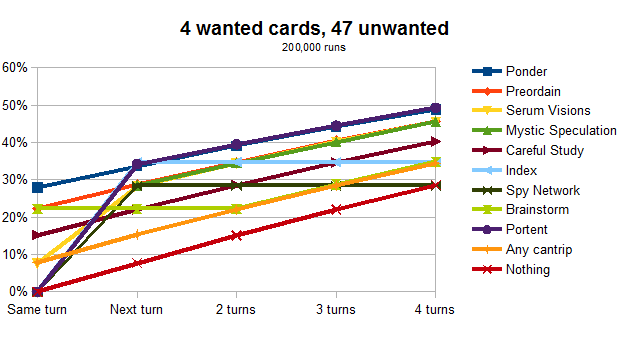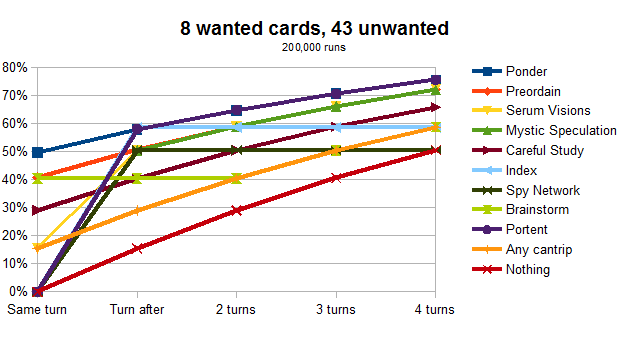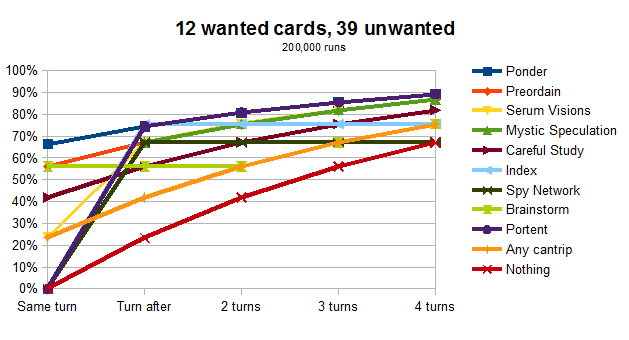Ever heard of Magic: The Gathering? Essentially, it’s a trading card game where players build their decks from a set of printed cards and then play each other; while strategy and skill play the biggest roles, luck is a determining factor as in any other card game.
This article assumes that the reader has some background knowledge about how the game works, so if you don’t but are curious, I recommend reading the Wikipedia article first.
One type of cards in this game allows players to attempt to locate other cards from their deck using different mechanisms; the differences can be subtle, so I decided to run a simulation to determine how useful are they at finding specific cards.
Decks that rely on the combination of 2-3 cards to win the game are the ones that tipically need these cards the most, so I decided to base my simulation on that; it divides the cards in two categories: wanted or not wanted, and then plays the different cards to see how early they’ll get one of the wanted cards.
The tested cards are:
- Ponder: the player will look a the first three cards of his deck; then he has the option to return them in any order, or shuffle the deck, and finally he’ll draw a card.
- Portent: similar to Ponder, but can also target the opponent’s deck; also, the card isn’t drawn in the same turn, but at the beginning of the next one.
- Preordain: look at the top 2 cards, and put each of them back either on the top or the bottom of the deck, and finally draw a card.
- Serum Visions: first draw a card, then look at the top 2 cards and finally return them like in Preordain.
- Mystic Speculation: look at the top 3 cards, and return them like Preordain or Serum Visions.
- Careful Study: draw two cards, then discard two cards.
- Index: look at the first 5 cards, then return them on the top of the deck in any order.
- Spy Network: like Index, but with the first 4 ones; also, the player can check his opponent’s hand and top deck card.
- Brainstorm: draw 3 cards, then return 2 cards to the top of the deck.
- Any cantrip: this refers to any spell or effect that makes the player draw a card.
- Nothing: this is the baseline, what happens if no spell is played.
The simulations were run 200,000 times following the Monte Carlo method, and
taking in account a deck of 51 cards with several proportions between wanted
and unwanted cards; the results are shown as the probability that the player
got at least one wanted card by certain turn:



The cards that have flat probabilities for some turns (Index, Spy Network and Brainstorm) are the ones in which the player has ordered the cards on top of his deck, so he knows exactly what he’s going to draw next; while this can be avoided by playing cards or effects that shuffle the deck, it wasn’t taken in account in the simulator.
The cards that would show exactly the same probability line as another card were omitted; for instance, Opt and Sleight of Mind would have exactly the same line as Careful Study.
So, to answer the question this article began with, Ponder appears to be better than Preordain when searching for a specific card, even after a number of turns; also, it’s interesting to notice that Serum Visions is almost as good as Preordain for this purpose, as Preordain is banned in some formats.